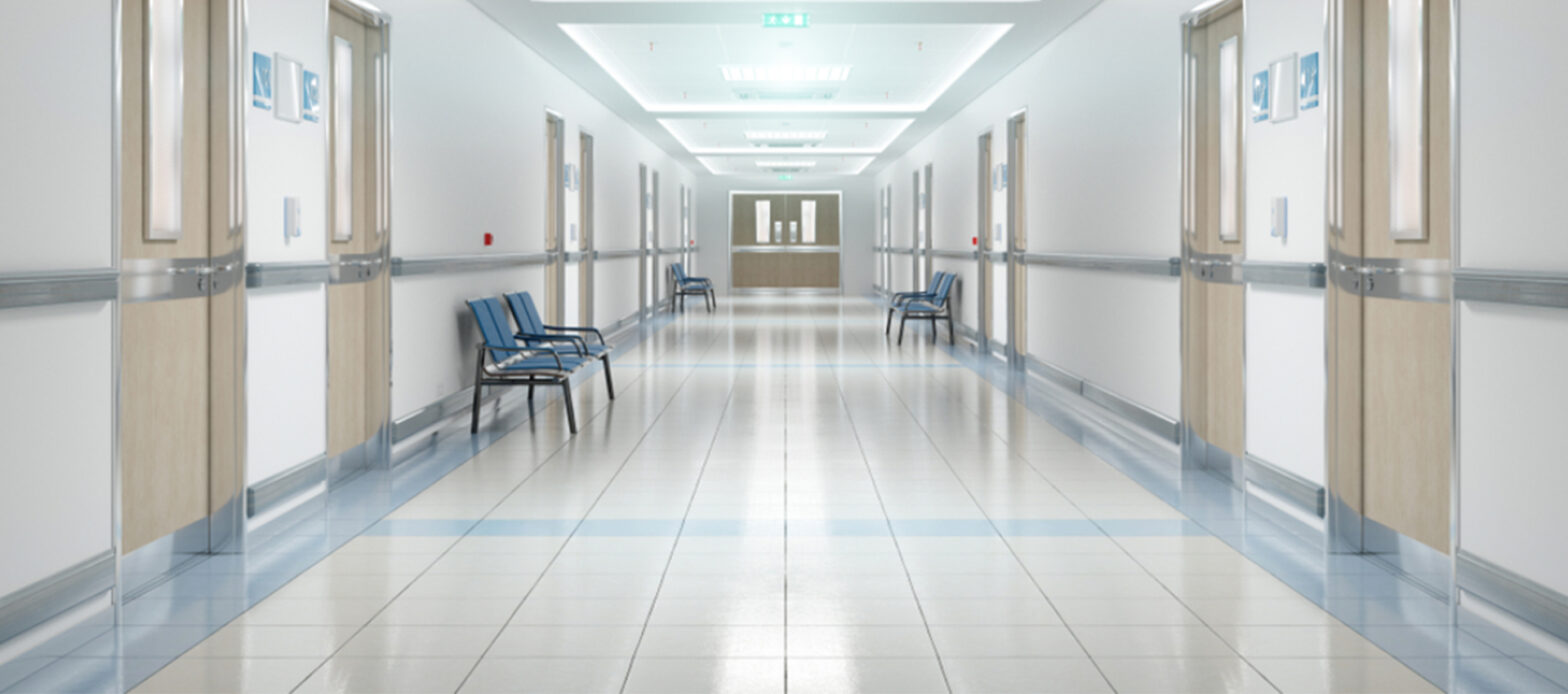
Flooring solutions for the healthcare industry comes with its own set of challenges. Requiring unique solutions different from other commercial or industrial sectors there are several factors to consider while choosing hospital flooring like:
Medical grade flooring apart from being anti slip and skid, should also accommodate high footfall.
An area like the hospital entrance should both be pleasing to the eye and durable and easy to clean. Experiencing high footfall and rolling load traffic, the flooring solution in the entrance should be water and stain resistant. Additionally, it should be formulated to be anti-slip to avoid injuries to patients and staff.
Luxury Vinyl Tile (LVT): One of the most common and popular flooring products, LVT is quite sturdy and low maintenance. Additionally, it is easy to install, highly durable and resilient and waterproof. LVT offers endless design options as it uses a photographic print process.
Sheet Vinyl: Sheet vinyl flooring has been used in hospital flooring for decades. This surface has excellent anti-microbial properties and is easy to clean and maintain. This product is available in 4-, 5-, and 6-foot-wide rolls and 2-3 millimetre in thickness allowing for a minimal number of seams. Sheet vinyl can be flash coved, which will create a monolithic, seamless floor adding to its aesthetic appeal.
Vinyl Composition Tile (VCT): VCTs are a mixture of natural limestone, fillers, color pigments and a thermoplastic binder and are very durable. However, VCT is higher maintenance (stripping, waxing, polishing) than other vinyl floors and the life cycle costs should also be calculated and considered.
Rubber: Rubber flooring solutions offer extremely high durability and versatility in terms of design. Due to its high strength and seamless installation, premium rubber flooring has been quite popular in medical settings.
Linoleum: Linoleum is the flooring of choice with environmentally conscious buyers as it is composed of natural material including linseed oil, cork dust and jute fiber. Its anti-microbial properties keep it high on the list for hospital use in spite of losing some popularity due to the advent of other options.
Procedure rooms require a flooring that can withstand the movement of heavy hospital beds, x-ray machines, stretchers, and other equipment. Welded sheet rubber with “Dri Fit” tape or two-part urethane epoxy (Dri Fit is a double-sided adhesive tape used for its strength and durability) is gaining popularity due to its quick installation.
Also, rubber and linoleum are softer underfoot and more cushioned than sheet vinyl or VCT and hence score high on comfort with doctors and nurses.
Hospital patient rooms focus more on aesthetics to aid in the healing process and impart a warmer look to the room. It is essential for reducing the patient’s stress. LVT, sheet vinyl or linoleum are the best options here as they allow for extended design opportunities, easy maintenance, as well as quick turn-around times on installation.
With the market flooded with so many options for medical grade flooring, it can get confusing to make the correct choice. Its best to choose keeping in mind your requirements along with the advice of the flooring solutions experts. Additionally, you can also look at the certifications & ratings awarded by various agencies that serve as a best practices guide.
OxyMed has done several successful projects of supplying & installation for medical grade flooring in Hospitals, Medical centres and Sport centres. For inquiries and technical clarification and consultation one can approach to OxyMed.